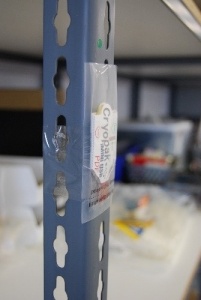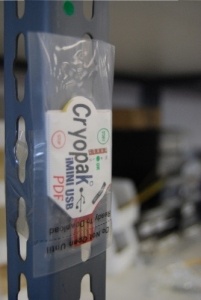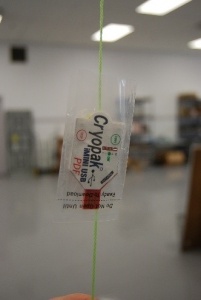Click here to read the first part of this Temperature Mapping Series!
Now that your protocol has been written and approved, you are ready to start executing the protocol. You will need to program and install data loggers, while documenting the process. Once the study is over, you will have to remove the data loggers and download the data. But how do we do this exactly?
1- Program Data Loggers
To perform the study, you will need to program calibrated data loggers using a FDA code 21 CFR part 11 compliant software. Program each data logger according to the parameters specified in the protocol.
To reduce the risk of error, make sure to enter the data logger's identification number in the "Description" field. Once this is done, physically label the data logger with the same ID number.
Select the temperature limits or alarms. These will make it easier to spot the temperature excursions (if any) when analyzing the data.
Select the reading interval. This will determine how often the data logger will take a measurement. This should be stated in the protocol.
Finally, select the specific time and date when the data loggers should start recording data. You are now ready for the second step of protocol execution.
Quick tip: Don't forget to hit the program button! There's nothing worse than having to start all over again because of a programming mistake!
2- Install Data Loggers
Once you are ready to execute the temperature mapping, install the data loggers as per the floor plan in your protocol. Just keep in mind that the locations and heights are approximate and might need some adjustments once on site.
Finally, secure the data loggers in place. Make sure they will stay put during the study. Attach them to stationary objects such as shelves, or racks. Please refer to the pictures below for suggestions. In case of large empty spaces, you can install data loggers on ropes hanging from the ceiling.
3- Documentation
It's very important to properly document every section of the warehouse in your protocol. Make sure to record all relevant information and discuss any unusual observations that might affect the study. Record the exact data loggers' location as well as any other information requested in the protocol. Sign and date any change to the protocol.
4- Remove Data Loggers
Once the study is over, remove all data loggers. Use the floor plan to make sure you don't forget any. If you have different sections in your warehouse, try to separate the data loggers by sections.
5- Download Data
If you are using our iMiniUSB pdf data loggers, simply connect the data loggers to a USB port on your computer. Save the .pdf and .csv files.
If you are using a different type of data loggers, follow the manufacturer's specifications to download the data.
You are now done with protocol execution. Stay tuned for our post on temperature mapping reporting!
Have additional questions regarding temperature mapping and protocol execution? Ask one of our experts!






